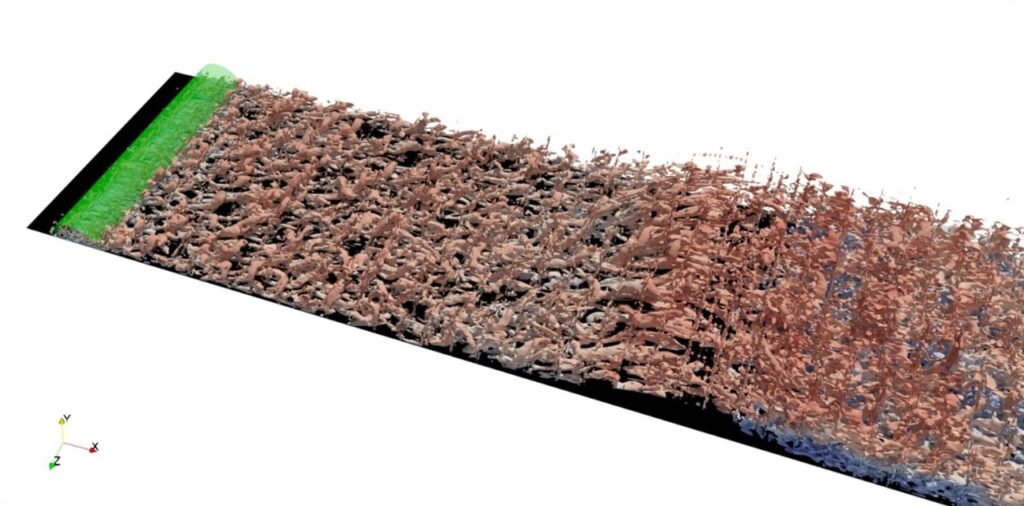High-fidelity simulations on massively parallel architectures for aeronautical applications

Simulations of flow over a smooth bump are being conducted by R. Stanley under the supervision of Drs. Mukha, Schlatter, and Markidis. Currently, numerical tripping is used to trigger transition of the incoming boundary layer to turbulence. At the same time, a project on accurate and economical turbulent inflow boundary conditions is ongoing, based on a Fourier-POD decomposition of reference flow data obtained using the spectral code SIMSON. Results indicate that keeping only a small fraction of the modes, it is possible to reconstruct high quality inflow velocity fields.
Figure: Vortical structures developing in the boundary layer separating from a smooth hump. The green half-cylinder shows the region with active boundary tripping.
Reference: Stanly, Mukha, Markidis and Schlatter, Low-order-model-based turbulence inflow generator for wall-bounded flows. Presentation at the EFMC conference in Athens, September 2022.




